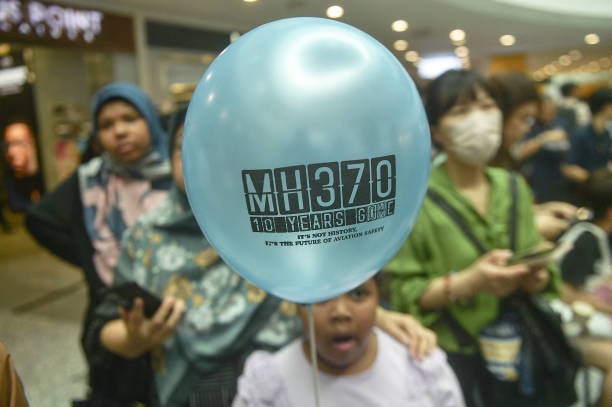Malaysia is preparing to relaunch the search for the long-lost Malaysia Airlines Flight MH370 which vanished in 2014 with 239 people aboard, following what officials describe as a “credible” proposal pinpointing a new area in the southern Indian Ocean.
On 5 November, transport minister Anthony Loke confirmed to parliament that Malaysia is in advanced talks with Ocean Infinity, a US-based marine exploration company, over a plan submitted in June 2024 to resume the search in a 15,000sqkm zone off the coast of Western Australia.
The proposal adheres to a “no find, no fee” structure, meaning that Malaysia would only incur costs if wreckage is located.
“Based on the latest information and analysis from experts and researchers, Ocean Infinity’s search proposal is credible and can be considered by the Malaysian government as the flight’s official registrar,” said Mr Loke, adding that the company is requesting a fee of $70m if successful – an amount similar to what was proposed in an earlier attempt.
“The terms and costs requested are in the same draft agreement currently being negotiated between the government and Ocean Infinity. Should it be finalised, cabinet approval will be required, and I will make a public announcement,” he said.

Since its disappearance during its flight from Kuala Lumpur to Beijing, it has become the biggest mystery in aviation history and theories of what happened to the 227 passengers and 12 crew members have been extensively evaluated.
Satellite data analysis showed the plane likely crashed somewhere in the southern Indian Ocean, off the coast of western Australia. However, two major searches failed to come up with any significant findings.
After the original search led by Malaysia, China, and Australia was suspended in 2017, and a private effort by Ocean Infinity concluded without success in 2018, interest in reopening the search has gathered momentum.
The latest effort comes as a Beijing court considers compensation claims from over 40 families of Chinese passengers aboard the ill-fated flight. Chinese foreign ministry spokesperson Wang Wenbin recently expressed gratitude for Malaysia’s continued attention to the case, encouraging close collaboration on the renewed effort.
Dr Lam Choong Wah, a defence analyst at Universiti Malaya, suggested Malaysia could deepen its cooperation with China, which has advanced underwater search capabilities, for the 50th anniversary of their diplomatic relations. “As most of the passengers on MH370 were Chinese, Malaysia should not hesitate to collaborate with Beijing,” Dr Lam told Strait Times, highlighting Chinese research vessels like the Xiang Yang Hong that have regularly surveyed the Indian Ocean since 2016.

Earlier, Malaysia, Australia and China launched an underwater search in a 120,000 sqkm area in the southern Indian Ocean, based on data of automatic connections between an Inmarsat satellite and the plane.
The search, which cost about $143m, was called off after two years in January 2017 with no traces of the plane found.
In 2018, Malaysia accepted a “no-cure, no-fee” offer from US exploration firm Ocean Infinity for a three-month search, meaning the company would only get paid if it found the plane.
That search covered 112,000sqkm north of the original target area and also proved fruitless, ending in May 2018.
More than 30 pieces of suspected aircraft debris have been collected along the coast of Africa and on islands in the Indian Ocean, but only three wing fragments were confirmed to be from MH370.
Most of the debris were used in drift pattern analysis in the hopes of narrowing down the aircraft’s possible location.
A 495-page report into MH370’s disappearance, published in July 2018, said the Boeing 777’s controls were likely deliberately manipulated to take it off course, but investigators could not determine who was responsible.




